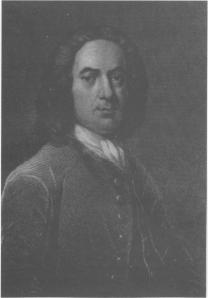William Smellie was an obstetrician regarded as the “master of British midwifery.” (Dunn) Smellie received a medical degree from the University of Glasgow in 1745. He practiced obstetrics and midwifery both before and after obtaining his degree and medical license. After he earned his medical degree, he also was a prominent teacher and developed tools for the purpose of teaching about the labor process. Smellie’s passion seemed to be in teaching the art of midwifery to others. As one website notes, Smellie would even wave his fees if he was able to act as a preceptor to his students during the birth. (www.sceiencemuseum.org) Education was of the utmost importance to Smellie as he is famed for the “institution of midwifery instruction in London.” (King 66) Smellie also published a great number of works that illustrated his “extensive experience.” (Dunn) His work was considered the “finest obstetric text of the day.” (Dunn)
Smellie had an interesting relationship with other midwives, particularly female midwives. As scholar Helen King notes,”the rise of the man-midwife emphasized changes in female culture, with elite women trying to set themselves apart from their poorer sisters by employing men, and those of lower classes then trying to emulate those of higher classes.” (King 72) The conclusion made here is that women–through social hierarchies and expectations, created the male-midwife. Because of the gendered access in Early Modern Europe to education, male-midwives such as Smellie were able to attend universities and complete both studies and formal apprenticeships in obstetrics. Smellie’s resume was impressive: working as an apothecary, surgeon, and serving in the Royal Navy. (King 72) This access to education definitely helped in re-enforcing the image of the educated male-midwife, who would have been a better choice for the “high-born.” This separation of gender did not prevent Smellie from being called on and working with female practitioners of midwifery, particularly in difficult and unusual labors. (King 73) Smellie would have also employed “his (female) midwives” who would start the child-bearing process and only send for his assistance in the final hour. (King 74) For the most part Smellie seemed to have gotten along fairly well with the midwives he worked with. This was not always the case in male-midwifery. It seems most male-midwives of the time thought their female counterparts to be little more than an alarm. (King 75) This mentality created an atmosphere in which Elizabeth Nihell says is an example of “men-midwives keeping their female pupils in a subservient position, preventing them from achieving ‘any eminence in the profession.'” (King 75) King notes that some women midwives considered this treatment “abandonment.” (King 75) In Smellie’s case he seems to have had a “familiar situation existed with respect to nurses.” (King 76) This was certainly an unusual gender behavior in the practice of midwifery during this era.
The use of medical technology in Smellie’s teaching seemed to be of paramount importance. He developed several tools to use in his teaching and demonstrations. (Dunn) Smellie created a mannequin to act as an example for illustrating the possibilities of labor. He also dabbled at creating his own forceps until the secretive Chamberlen family design was made public. (www.sciencemuseum.org) Smellie is also credited for the continued development of modern obstetrics. (King 66) While Smellie clearly valued the use of medical technology during the process of labor, he stressed the importance of using them only when necessary as a life-saving precaution. Dunn says, “Smellie strongly believed in natural childbirth and non-interference whenever possible.” (Dunn)
It is clear the impact of education on the life of William Smellie. This is evidenced in both his work as a pupil, and as a teacher. Through an analysis of male-midwives like Smellie, female midwives of the time, and the relationship between the two, we can learn a great deal about the gendered process of education and licensure for midwives during the Early Modern period in Europe.
Bibliography
- Dunn, Peter M. “Dr William Smellie (1697-1763), the master of British midwifery,” Perinatal Lessons From The Past, Last modified January 1995, http://www.ncbi.nlm.nih.gov/pmc/articles/PMC2528415/
- King, Helen. “Medical History and Obstetric Practice in William Smellie.” in Midwifery, Obstetrics and the Rise of Gynaecology, edited by Allyson Poska and Abby Zanger, 65-107. Burlington: Ashgate Publishing Company, 2007.
- “William Smellie (1697-1763)” Science Museum. Brought to Life: Exploring the History of Medicine, accessed April 5, 2014. http://www.sciencemuseum.org.uk/broughttolife/people/williamsmellie.aspx

Pingback: The Impact of Gender on the Practice of Midwifery in 17th Century Europe | Women in European History